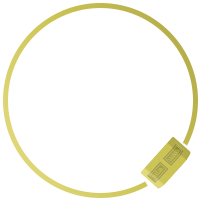—- Starbase86, Logistical Support Office —-
Captain Radak felt old. Not yet one hundred he normally would have been looking forward to a long and prosperous career even now. For a Vulcan he was young, or at least in his middle age, but his bones felt old and her felt spent and used up. He’d commanded a starship and then taken a desk job at a Starbase hoping to get away from the hustle and bustle (a human term he’d learned) of command. Now he reviewed reports and allocated fleet resources a sedate job that did not require the kind of dedication that captaining a starship did.
He was a month away from retiring. Early, but he had the forms on his desk and was ready to file them. He had entered the early stages of Tuvan Syndrome and while he still had twenty odd years left, he was feeling the effects. He could mask them, keep them hidden from his co-workers, but he knew that within five years his facial muscles would start to droop and slowly within a decade his motor functions would become impaired. Even now his joints hurt, and standing to replicate himself a glass of water might have felled another species. He kept his face neutral, placid, and looking as if nothing was wrong. He was an intensely private man, and his only friends had not been his friends but his former crew. Now he just filed paperwork (another human term) and went about his day.
He had looked at retirement options, opting for the warmth of the Vulcan desert. A home away from civilization where he could read and spend his final decades in quiet reflection. For all the advances in medicine and all the improvements in health he was going to die. Sooner rather than later. Another being might have had to grapple with that, might have gone through stages of grief. Radak just accepted it, almost looking forward to it, at least he did not have to plan for the long term.
He was not a mid-level pencil pusher (yet another human term) and spent his days looking over reports. He did not assign Task Force 86’s ships, merely took their reports and sensor logs and made suggestions as to where it might be most logical to send them. He never spoke to the captains, or was known outside of a select few who relied on his work to draw their own conclusions of the situation.
He knew it was illogical that his bones hurt. He knew that bones themselves had no pain receptors to relay their discomfort to the brain, but he felt the dull ache. He forced it to the back of his mind as he read through the latest report from the USS Selene. He paused, paging back to a sensor chart and began to write a report.
—- USS Selene, Captain’s Ready Room —-
“I don’t understand what Starfleet wants,” Captain Olivia Carrillo said sliding the PADD across her desk to her First Officer.
The former science officer picked it up and studied it intently. Lieutenant Commander Keyana Mason knew what it said, and felt ashamed that their own scientists had not picked up on the data that they had sent back to Starbase 86. It was just a minor reading, lost in the vast amount of sensor data they had sent along, but it was something.
“Essentially,” she explained, “our sensors picked up a increase in tachyon readings in this section we warped past. The build up looks artificial. Starfleet wants us to check it out.”
“Artificial,” Carrillo said slowly grasping what the situation was, “as in cloaked ships.”
“A lot of them,” Mason said.
Without looking at the situation, getting better readings, they could not know what ships where there, but that was not going to stop Carrillo from wanting to speculate, especially since it was her crew on the line if things went wrong.
“Klingons?” Carrillo asked.
“It would be a surprise staging area for an invasion into Romulan space,” Mason said, “and it would fit with our readings. That many ships, we might not know where they were but if we’re picking up radiation like this, it could be that.”
“Why didn’t we pick it up?” Carrillo asked, “Why are we relying on Starfleet to do this work for us?”
“We’ve scanned dozens of anomalies, charted a great deal of space, and been training cadets,” Mason said, “we are also still building up our science departments. So missing something isn’t a big deal, we just try to make sure it doesn’t happen again.”
The idea of running headlong into a sector full of cloaked ships, of any type, was not one that the captain was keen on. The two officers kicked around ideas on how they could approach it, and still be able to make a getaway if the ships were hostile. Even Klingon ships, might prove to be an issue given that the Federation was positioned firmly between the Romulans and Klingons and the assumption (perhaps correctly) would be that they would alert the other power if an armada was found. This far from Federation space it would be a simple matter to make a starship vanish by destroying it, rather than have their secret revealed.
With no satisfactory answer they resolved to bring it to the senior staff and broke up the meeting to prepare for the day’s briefing.
—- USS Selene, Unexplored Space —-
At least a month from Federation space at top warp, there was no desire to get into a prolonged engagement with a hostile ship. The USS Selene positioned itself near a binary star, two twin stars that interacted whose gravity fought for possession of their planets. It seemed that the four planets in their system would take turns, orbiting one for a year then pulled by the gravity of the other and orbiting it for a cycle until the gravity of the first sun pulled them towards it. It was enough to send the science teams into a tizzy taking readings and building models in their labs.
It was also placed in close proximity to the sector of space where the tachyon buildup had been detected. The Selene had looped back there, and now could be seen to be studying the stars while scanning the area where they suspected the cloaked ships were building up. While scientists were doing actual science, tactical and intelligence were learning what they could about the potential ships.
“Probably Klingon,” Lieutenant Commander Jake Dornall said, “There’s a distinctive emissions that we’re picking up, Romulan ships don’t have that.”
The science did not support drawing any hard and fast conclusions, but Carrillo had learned that Dornall had a tendency to be right, and likely was basing his guess on information that she was not being given.
“Why assemble so far out from either Klingon or Romulan space?” the captain asked.
“You could sneak behind Romulan lines, get around their defenses and launch attacks against their remaining core worlds,” Dornall observed.
“It could not even be cloaked ships, that’s still just a guess,” Lieutenant Commander Keyana Mason said.
Dornall shrugged, “We’ll send a probe in. If it’s cloaked ships I imagine it gets blown up. If it doesn’t, we might have to rethink the assumption.”
“A probe would alert them,” Carrillo pointed out.
“Then we run like crazy,” Dornall said, “I’d put the Selene up against any Klingon cruiser in terms of running speed.”
Carrillo did not have that confidence, but it seemed to be the best option that she was presented with, “Okay shoot off a probe, make it look like it’s doing routine science stuff. Mason make sure we’re ready to go to high speed warp at a moment’s notice.”
Mason nodded, “I’ll make sure engineering is ready.”
An hour later a probe was sent from the ship. Its scanners remained trained on the binary stars, and sent out the probe as if it was an after thought, trying to accomplish multiple science missions at once as if nothing out of the ordinary had been picked up. The crew of the ship, particularly the captain, hoped that nothing would come from their investigation.

 Bravo Fleet
Bravo Fleet








